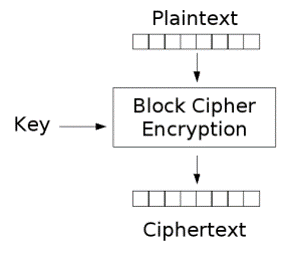Methods of Encryption
I was unable to use the editor for this post, instead I had to use Markdown, so I apologize if there are formatting issues.
If you are new to my Cryptology Series or are having trouble with any of the terminology, I encourage you to go to my blog and check out parts 1,2 and 3. Now let's get started!

Substitution Ciphers
Replaces bits, characters or blocks with different bits, characters or blocks.
Caesar cipher is a substitution cipher
Eample CAT=FDW
Transposition/ Permutation Cipher
Values are scrambled or put into a different order
Uses P boxes
Example. CAT=TCA Key=312
Substitution and transposition ciphers are relatively weak because of frequency analysis.
In every language certain letters are used more often than others and in certain patterns, computers can perform frequency analysis to reconstruct text.

Multi product cipher
A stronger cipher is multi product which combines both substitution and transposition.
Example.
Plain Text= CAT
Substitution=FDW
Transposition=312
Multi product = WFD
Methods of Encryption
Symmetric Cryptography
Uses symmetric keys known as secret keys, sender and receiver use two instances of the same key
Benefit: much faster and less computationally intensive
Weakness: Secure key distribution
Asymmetric Cryptography
Two different asymmetric keys that are mathematically related
One public and one private key
Benefit: better key distribution
Weakness: slower

Hybrid Encryption
Public key cryptography uses two keys, a public key generated by an asymmetric algorithm and a private key generated by a symmetric algorithm.
Symmetric is used for bulk encryption
Asymmetric is used to encrypt the private key for secure key distribution
Block Ciphers
Message is divided into blocks of bits, then put through the mathematical functions one block at a time.

Stream Cipher
Stream ciphers process messages a bit or byte at a time when en/decrypting
Stream ciphers use a key stream generators, which produce a stream of bits that is XORed with the plaintext bits to produce ciphertext.

Confusion vs Diffusion
Confusion is commonly carried out through substitution.
Makes the relationship between the key and the resulting cipher text, making it complex so key cannot be identified
Diffusion is carried out by using transposition.
dissipates statistical structure of plaintext over bulk of cipher text
Avalanche Effect
Avalanche Effect- if the input to an algorithm is slightly modified then the output of the algorithm is changed significantly
Cryptographic Transformation
Initialization Vectors- random values in algorithm used to ensure patterns are not created in the encryption process.
Compression- reduce redundancy before PT is encrypted.
Expansion- expanding the PT by duplicating values. Commonly used to increase PT size to map key sizes.
Padding- adding material to PT before it is encrypted.
Key mixing-using a portion (subkey) of a key to limit the exposure of the key. Key schedules are used to generate sub keys
There will be a part 5 and 6 to the Cryptology Series
I will also be holding another Cryptography challenge where you can win STEEM!
I have a few other exciting projects in the works that I hope you will like, stay tuned!
Follow my blog @digicrypt if you are interested in cryptocurrency, cryptology or blockchain.
DASH: XgQ9NBonMoCPKhF37agY4W8zk7gwQFnwGV
Ether: XE04RO3I0QA5UKB31OZK4O3CK3TOT03R4TM

